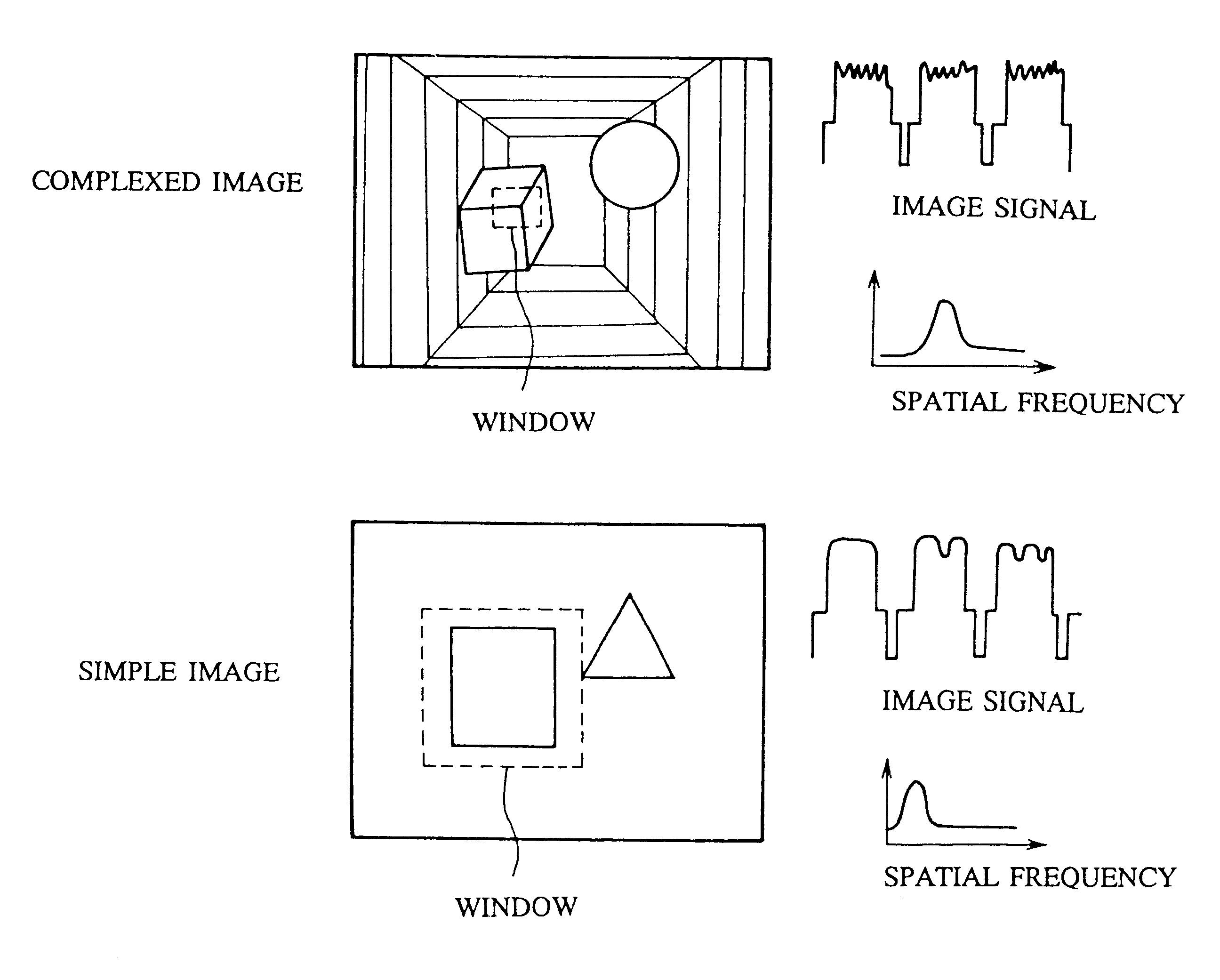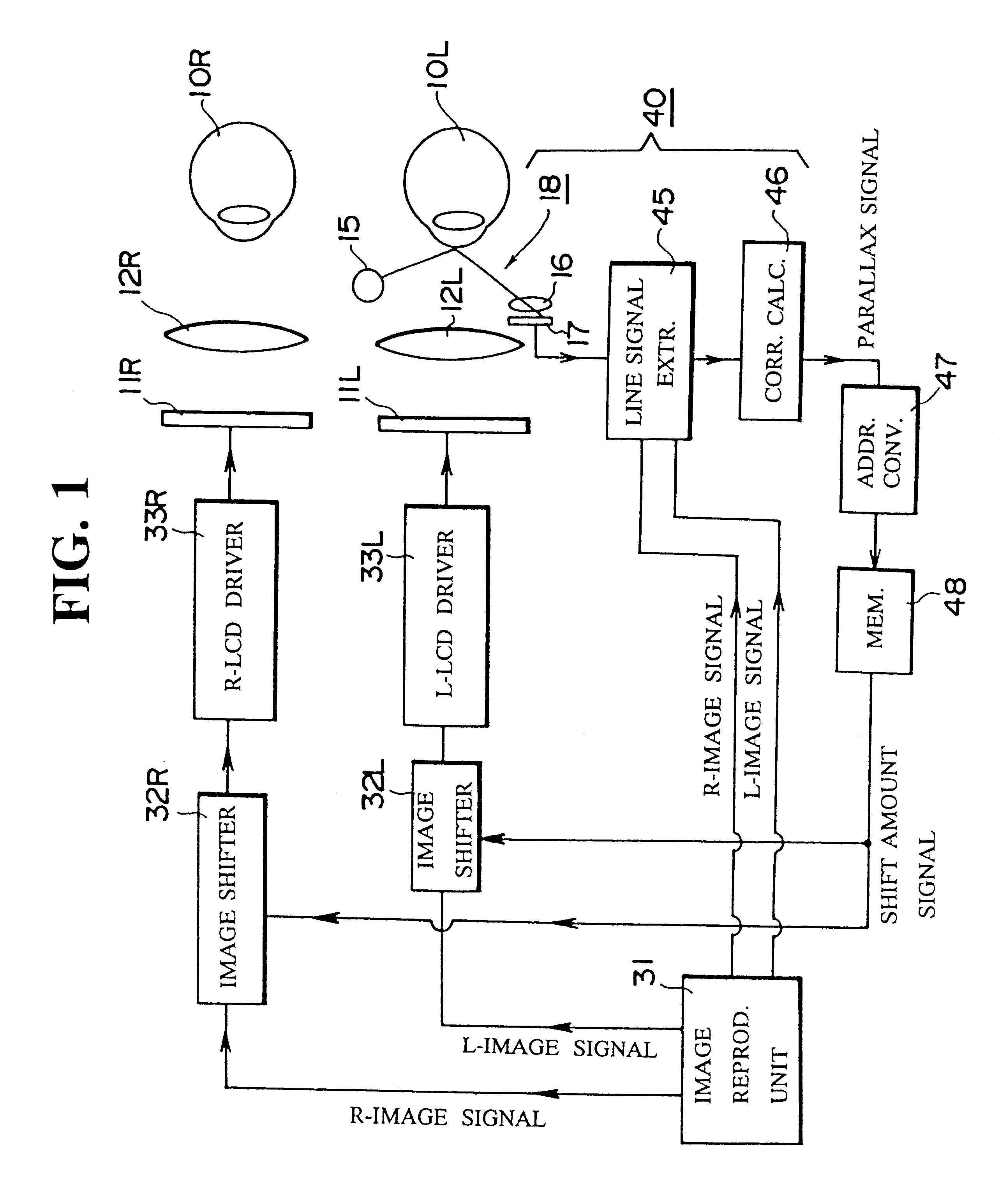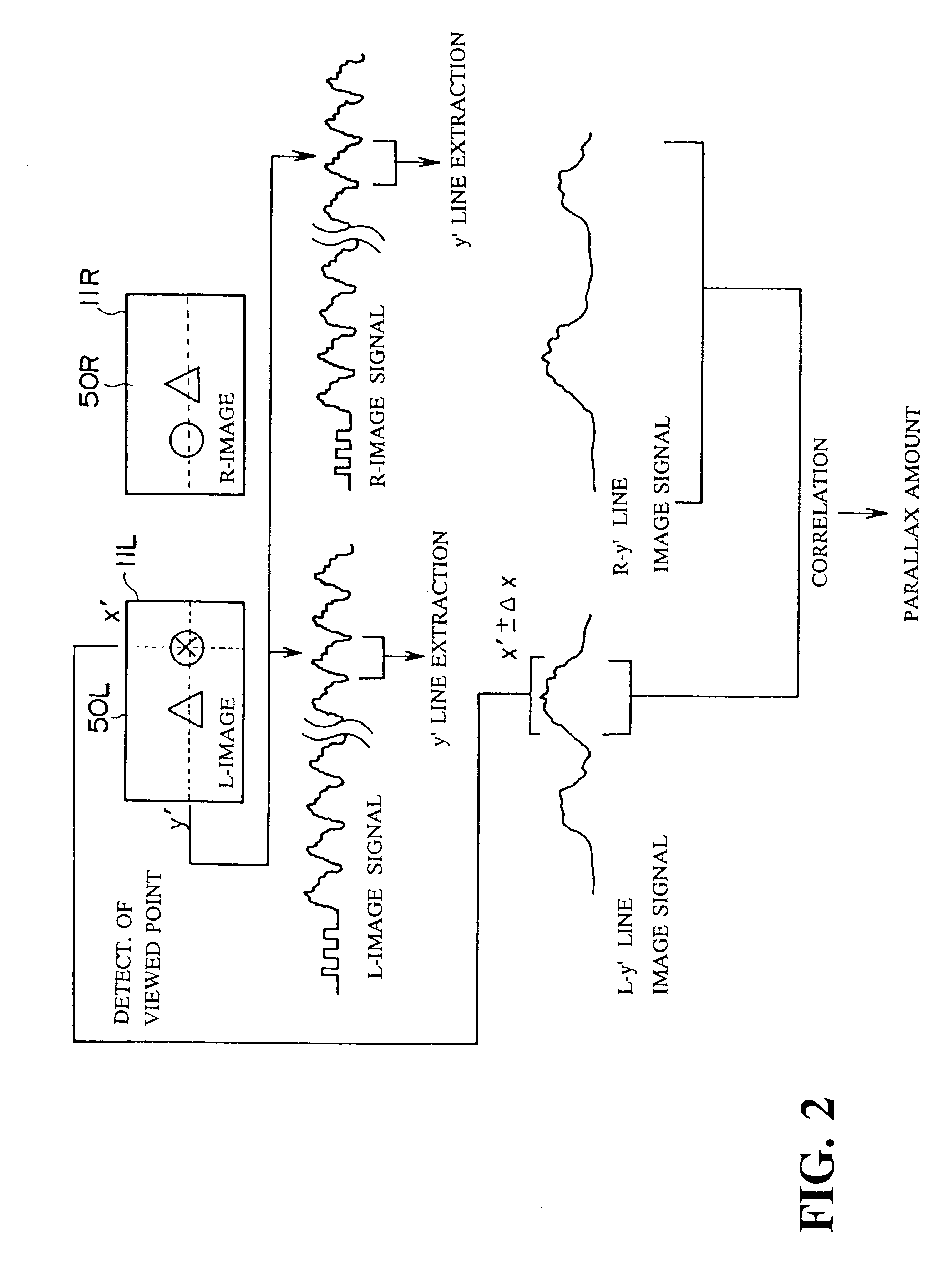Stereo image display apparatus
a display apparatus and stereo image technology, applied in the field of stereo image display apparatuses, can solve the problems of weakening the impact of image as stereo image, unnatural viewing, and difficulty in recognizing a change in the distance of a single object,
- Summary
- Abstract
- Description
- Claims
- Application Information
AI Technical Summary
Problems solved by technology
Method used
Image
Examples
embodiment 1
FIG. 4 is an optical path diagram showing an example of eyepiece optical system, in which the optical systems shown in FIG. 3 function as shading-off means. In the proposal publication, this system is described as Embodiment 1 on the basis of FIG. 4.
Referring to FIG. 4, in order to lead an image light flux from the right eye (or left eye) LCD 11R (or 11L) as image display element to the viewer's right eye (or left eye) pupil 10Rp (or 10Lp), a beam splitter prism 12R (or 12L) is provided, which has an inclined half mirror 12Rd (or 12Ld) disposed at the intersection between the optical axis of the LCD 11R (or 11L) and the viewer's eyesight axis. The beam splitter prism 12R (or 12L) has a convex mirror 12Rb (or 12Lb) at the bottom. An image light flux from the LCD 11R (or 11L) is incident on the top surface of the beam splitter prism 12R (or 12L), then transmitted through the half mirror 12Rd (or 12Ld) and then reflected by the convex mirror 12Rb (12Lb) as the bottom inner surface of t...
embodiment 6
FIG. 5 is an optical path diagram showing another example of the eyepiece optical system, in which the optical systems shown in FIG. 1 function as shading-off means. In the proposal publication, this system is described as Embodiment 6 on the basis of FIG. 9.
With reference to FIG. 5, like the example shown in FIG. 4, in order to lead an image light flux from the right eye (or left eye) LCD 11R (or 11L) as image display element to the viewer's right eye (or left eye) pupil 10Rp (or 10Lp), a beam splitter prism 12R (or 12L) is provided, which has an inclined half mirror 12Rd (or 12Ld) disposed at the intersection between the optical axis of the LCD 11R (or 11L) and the viewer's eyesight axis. The beam splitter prism 12R (or 12L) has a convex mirror 12Rb (or 12Lb) at the bottom. An image light flux from the LCD 11R (or 11L) is incident on the top surface of the beam splitter prism 12R (or 12L), then transmitted through the half mirror 12Rd (or 12Ld) and then reflected by the convex mir...
embodiment 7
FIG. 6 is an optical path diagram showing a further example of the eyepiece optical system, in which the optical systems shown in FIG. 3 function as shading-off means. In the proposal publication, this system is described as Embodiment 7 on the basis of FIG. 10.
Referring to FIG. 6, like the example shown in FIG. 4, in order to lead an image light flux from the right eye (or left eye) LCD 11R (or 11L) as image display element to be viewer's right eye (or left eye) pupil 10Rp (or 10Lp), a beam splitter prism 12R (or 12L) is provided, which has an inclined half mirror 12Rd (or 12Ld) disposed at the intersection between the optical axis of the LCD 11R (or 11L) and the viewer's eyesight axis. The beam splitter prism 12R (or 12L) has a convex mirror 12Rb (or 12Lb) at the bottom. An image light flux from the LCD 11R (or 11L) is incident on the top surface of the beam splitter prism 12R (or 12L), then transmitted through the half mirror 12Rd (or 12Ld) and then reflected by the convex mirror...
PUM
 Login to View More
Login to View More Abstract
Description
Claims
Application Information
 Login to View More
Login to View More - R&D
- Intellectual Property
- Life Sciences
- Materials
- Tech Scout
- Unparalleled Data Quality
- Higher Quality Content
- 60% Fewer Hallucinations
Browse by: Latest US Patents, China's latest patents, Technical Efficacy Thesaurus, Application Domain, Technology Topic, Popular Technical Reports.
© 2025 PatSnap. All rights reserved.Legal|Privacy policy|Modern Slavery Act Transparency Statement|Sitemap|About US| Contact US: help@patsnap.com



